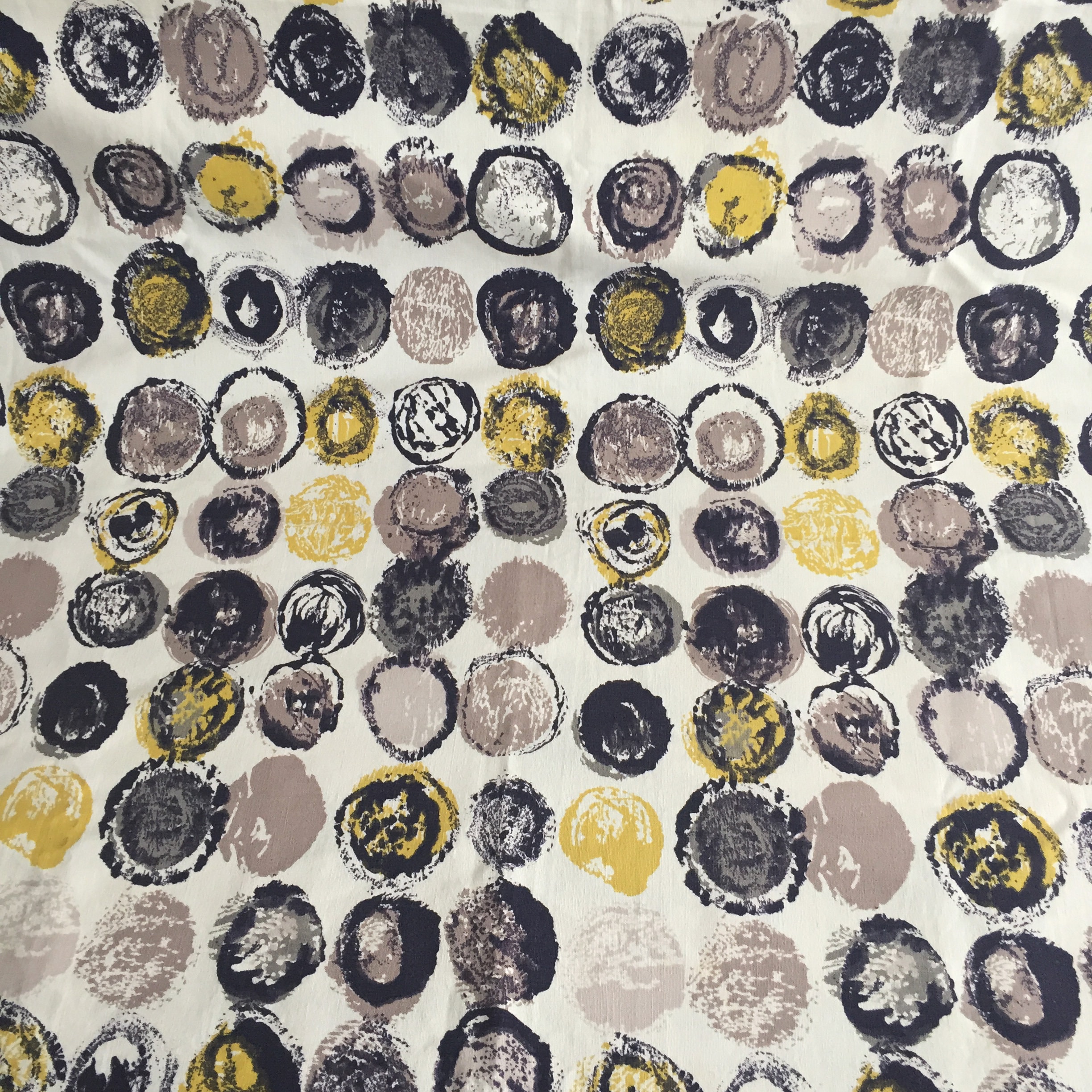
Lucienne Day dress fabric, c.1954 This pattern was inspired by the mobiles of Alexander
Tarn (Furnishing Fabric), 1958 Lucienne Day; Trio (Fragment), 1960s Lucienne Day; Sequoia (Dress or Furnishing Fabric), 1965/69 Lucienne Day; Baldric (Fragment), 1965 Lucienne Day; Baldric (Fragment), 1965 Lucienne Day; Baldric (Fragment), 1965 Lucienne Day; Page secondary navigation. See all 12 artworks

Lucienne Day Calyx Furnishing Fabric, Blue Lucienne day, Textile wall hangings, Furnishings
Quality: Lucienne Day fabrics are known for their high quality and exquisite designs. However, it's always a good idea to check the quality of the fabric before making a purchase. Look for fabrics that are durable, easy to clean, and have a luxurious feel. Color and pattern: Lucienne Day fabrics come in a wide range of colors and patterns.

A collection of ten fabric panels, designed by Lucienne Day, including 'Herb' and 'Quarto' Sold
I f one design could be said to epitomise the resurgent optimism of postwar Britain then Calyx by Lucienne Day fits the bill. It was a furnishing textile for Heal Fabrics showcased in a.

Calyx Fabric by Lucienne Day (Mustard) — Pallant
Lucienne Day Fabric (1 - 20 of 20 results) Price ($) Shipping All Sellers Butterflies (Lucienne Day Textile Design) - adjustable wood ring (538) $10.00 Lucienne Day for Heals Tarn Pattern Cotton Vintage Mid Century Screen Print Pink Black Abstract Panel British Graphic Design (67) $119.00 1950s vintage Lucienne Day tea towel Too Many Cooks (245)

1952 A detail from Lucienne Day’s ‘Miscellany’ fabric, manufactured by British Celanese
Lucienne Day was a formidably talented pattern-maker and colourist who, as an industrial designer, had worked with a variety of media, though the dominant one was printed textiles in repeat. The silk mosaics offered the same opportunity to work with composition and colour without the constraints of having to produce a pattern in repeat.

lucienne day Lucienne day, Dandelion clock, Made to measure curtains
February 2, 2021 by Rosie Lesso 11544 4 Lucienne Day, 1951 Lucienne Day was one of Britain's foremost post-war designers, creating dazzling textiles that decorated almost every home across the country throughout the 1950s and beyond.

Lucienne Day Lucienne day, Retro fabric patterns, Mid century modern artwork
A decade earlier, in the middle of the white heat of technology, came Lucienne Day, who was perhaps the most copied fabric designer of the mid-20th century, although not a household name today.

Lucienne Day Swatch 50's Pattern design inspiration, Lucienne day, Mid century modern art
Lucienne Day Textiles and Fabrics look amazing in a modern home, as well as mid-century interiors. Choose from over 20 Lucienne Day Textiles and order free samples

Lucienne Day Calyx (Drapery Fabric) Cranbrook Art Museum
Materials and techniques. printed cotton textile. Cotton. Printed. Brief description. 'Herb Antony', printed furnishing fabric, Lucienne Day, designed 1956, made circa 1960. Physical description. abstracted plant forms on a yellow ground. Dimensions.

The MeadowTree Journal Lucienne DayThe Orange Lookbook
In post-war Britain, a young Lucienne Day made her name in design conveying the buoyant national mood through jubilant, modernist textiles. These patterns have now come to define mid-century print design and remain wildly popular, and are being celebrated for her centenary today.

Lucienne Day centenary celebrations DesignCurial
Petal, 1972. Lucienne Day was one of the foremost textile designers in post-war Britain. She is credited with pioneering contemporary design in the furnishings textile industry with her introduction of the fabric Calyx in 1952. Her use of abstracted floral forms startled, yet attracted consumers and inspired imitations by her competitors.

Lucienne Day an introduction · V&A
Influential British Textile Designer Lucienne Day (1917 - 2010) she established herself as one of the most influential British textile designers in the postwar period. Lucienne Day her Early Years Lucienne Day was half-Belgian, with an English mother (Dulcie Conradi) and a Belgian father (Felix Conradi), who worked as a reinsurance broker.

The V&A collection of design by Lucienne Day, from dress fabric to wallpaper. Lucienne day
Textile designer Lucienne Day (1917 - 2010) graduated from the Royal College of Art in 1940, but her career breakthrough came with the launch of her pioneering contemporary textile 'Calyx', designed for the Festival of Britain in 1951, which embodied the energy and optimism of the postwar period. Read more Explore the Collections

Lucienne Day Ducatoon fabric for Heals
Bold Beginnings Lucienne was a British textile designer who discovered her love of fabric at the age of 17, when she attended Croydon School of Art. She studied textiles at the Royal College of Art, where she met her husband, Robin Day. He was also interested in modernist design as a furniture designer, and the two were married in 1942.

Lucienne Day an introduction · V&A
Brief description. 'Ducatoon', printed cotton furnishing fabric by Lucienne Day for Heals, British, 1959. Physical description. Furnishing fabric with yellow, grey, brown and black circles in brush strokes on a white ground. Dimensions.

lucienne day pattern Lucienne day, Printing on fabric, Modern graphic design
Désirée Lucienne Lisbeth Dulcie Day OBE RDI FCSD ( née Conradi; 5 January 1917 - 30 January 2010) was one of the most influential British textile designers of the 1950s and 1960s. Day drew on inspiration from other arts to develop a new style of abstract pattern-making in post-war British textiles, known as 'Contemporary' design.